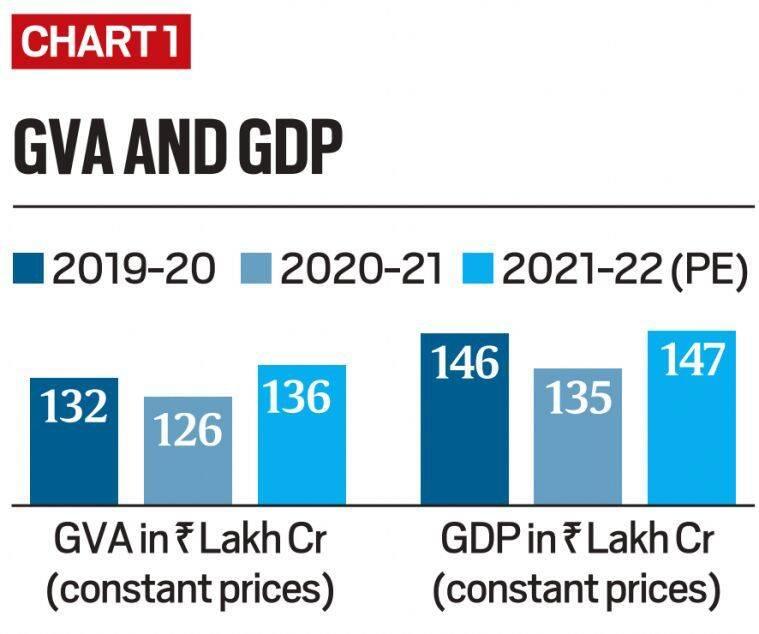7667766266
enquiry@shankarias.in
Newly released provisional estimates show GDP rose 8.7% in 2021-22.
The GDP measures the value of all final goods and services (those that are bought by the final user) produced in a country in a given period.
GDP = GVA + Taxes earned by the government — Subsidies provided by the government

GDP = PFCE + GFCF + GFCE + NX
Reference